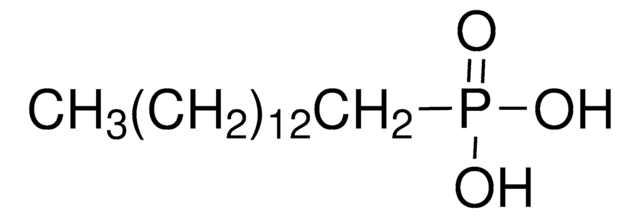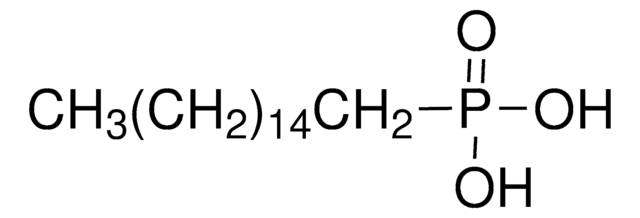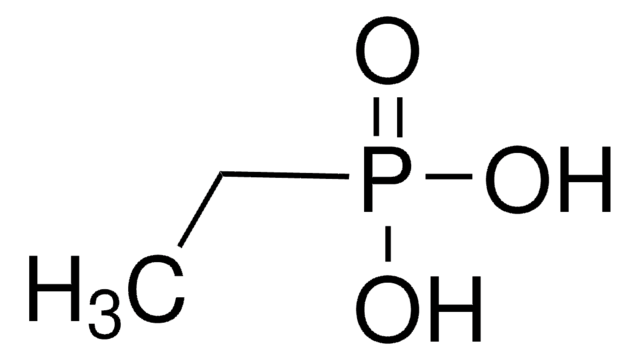737925
Decylphosphonic acid
97%
Sinônimo(s):
n-Decylphosphonic acid
About This Item
Produtos recomendados
Nível de qualidade
Ensaio
97%
Formulário
solid
pf
96-101 °C
cadeia de caracteres SMILES
CCCCCCCCCCP(O)(O)=O
InChI
1S/C10H23O3P/c1-2-3-4-5-6-7-8-9-10-14(11,12)13/h2-10H2,1H3,(H2,11,12,13)
chave InChI
DZQISOJKASMITI-UHFFFAOYSA-N
Categorias relacionadas
Descrição geral
Aplicação
Palavra indicadora
Danger
Frases de perigo
Declarações de precaução
Classificações de perigo
Skin Corr. 1B
Perigos de suplementos
Código de classe de armazenamento
8A - Combustible corrosive hazardous materials
Classe de risco de água (WGK)
WGK 3
Ponto de fulgor (°F)
Not applicable
Ponto de fulgor (°C)
Not applicable
Escolha uma das versões mais recentes:
Certificados de análise (COA)
Não está vendo a versão correta?
Se precisar de uma versão específica, você pode procurar um certificado específico pelo número do lote ou da remessa.
Já possui este produto?
Encontre a documentação dos produtos que você adquiriu recentemente na biblioteca de documentos.
Os clientes também visualizaram
Artigos
There is widespread demand for thin, lightweight, and flexible electronic devices such as displays, sensors, actuators, and radio-frequency identification tags (RFIDs). Flexibility is necessary for scalability, portability, and mechanical robustness.
Global Trade Item Number
| SKU | GTIN |
|---|---|
| 737925-1G | 4061826208113 |
| 737925-5G | 4061832882307 |
Nossa equipe de cientistas tem experiência em todas as áreas de pesquisa, incluindo Life Sciences, ciência de materiais, síntese química, cromatografia, química analítica e muitas outras.
Entre em contato com a assistência técnica













